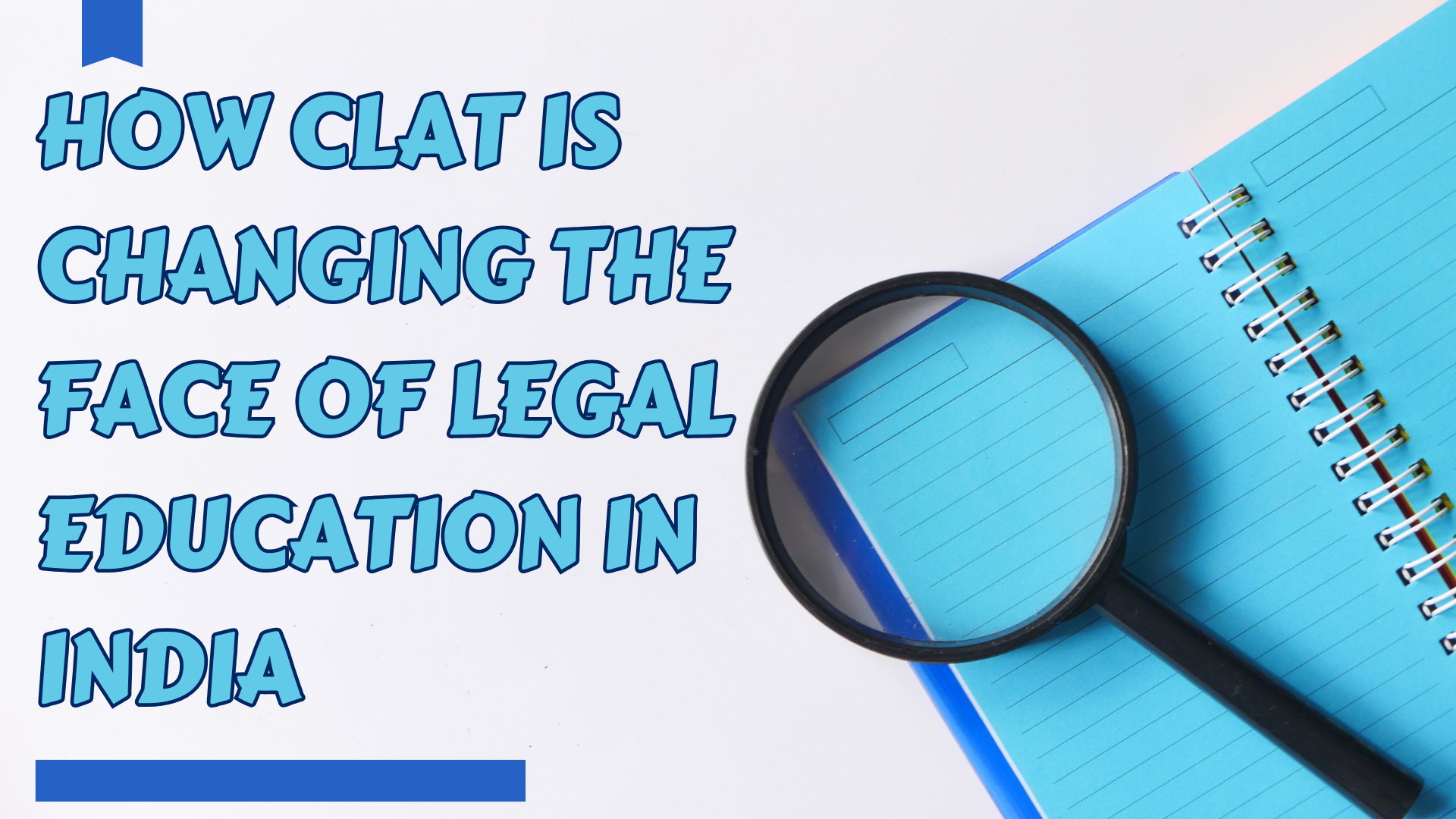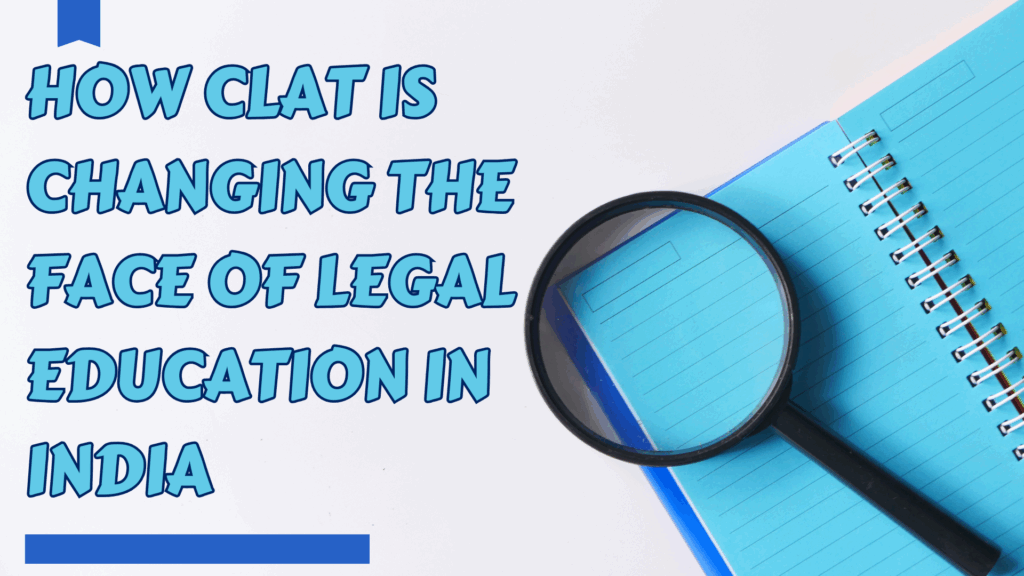In this article, we will discuss How CLAT 2025 Is Changing the Face of Legal Education in India; read this post and understand the future dynamics better.
How CLAT 2025 Is Changing the Face of Legal Education in India
For a long time, the Common Law Admission Test (CLAT) has been the route to get into India’s best law schools. But CLAT 2025 is about to change the way legal education works with a number of big changes to its format, purpose, and effects on those who want to become lawyers all throughout the country. The legal field is changing because of globalization, technology, and changes in legislation. CLAT’s changes are a timely reaction that will help create attorneys who are ready for the future.
In this post, we talk about how CLAT 2025 is altering legal education in India, what the most important changes are, and what they entail for students, schools, and the legal profession as a whole.
What is CLAT?
The Common Law Admission Test (CLAT) is a national-level entrance test for undergraduate (UG) and postgraduate (PG) law programs at 24 National Law Universities (NLUs) in India. More than 70 additional private and public colleges also accept it.

The CLAT UG exam looks at how well you can do in English, Current Affairs, Legal Reasoning, Logical Reasoning, and quantitative techniques. The CLAT PG exam tests your understanding of important areas of law, such as constitutional law, jurisprudence, contract law, and others.
What Are The Changes in CLAT 2025?
The Consortium of National Law Universities runs CLAT and has made important changes to the 2025 version to make the test more open, welcoming, and in line with the ideals of modern legal education.
1. New way to ask questions
- The number of questions has been cut down from 150 to 120 to lower stress and promote deeper comprehension instead of just memorizing.
- The questions are mainly on applying what you know, especially in Current Affairs and Legal Reasoning.
- Now, the focus is on portions that need understanding, which means thinking critically and interpreting instead than just memorizing.
2. Streamlining the syllabus
- Concentrate on a limited number of pertinent subjects in logical thinking, legal reasoning, and numeric ability.
- More focus on current legal concerns, changes in the courts, and themes of social justice.
3. Putting everything together digitally
- Establishment of CLAT digital practice facilities throughout rural and urban India, enhancing accessibility for students without private coaching resources.
- Better online practice exams, answer explanations, and statistics to help you keep track of your progress.
4. Changes to policies that include everyone
- The Consortium is working on rules to make CLAT available in more regional languages in future editions. Hindi and Tamil are two languages that are being seriously considered.
- Fee exemptions and reduced application costs for people with disabilities (PwD) and those who are economically disadvantaged (EWS).
More Details: Find Here
The improvements made to CLAT 2025 are not simply small changes; they are part of a bigger revolution in the way legal education works in India.
Why These Changes Are Important
Making Law School More Accessible
The improvements to CLAT 2025 are meant to make things fairer for everyone. The test promotes actual ability instead than pricey coaching-based cramming by concentrating on understanding and real-world legal reasoning. This change helps smart students from a wide range of backgrounds, notably those from Tier 2 and Tier 3 cities.
Building Stronger Legal Foundations
The new format of CLAT is in line with how legal education is changing. Students are now expected to think like attorneys in the future by looking at case scenarios, understanding laws, and coming to well-thought-out conclusions. These are all abilities that are useful in legal practice.
Promoting Legal Careers Based on Skills
As the world becomes more connected and digital, emerging fields including technology law, international arbitration, environmental law, and legal analytics are becoming more popular. The CLAT Consortium’s move toward testing students’ skills and concepts will assist them get ready for these areas.
The Future of CLAT and Legal Education
CLAT 2025 is part of a bigger trend in legal academics toward skill-based rather than knowledge-based education. The National Education Policy (NEP) 2020 also stresses programs that focus on outcomes and learning across disciplines, which fits very nicely with these reforms.
We may expect the following in the next several years:
- More digital updates and tests that use AI to grade
- More ways to get into the law in your own language
- More collaboration between industry and academia in designing the curriculum
As the government brings its higher education legislation in line with global norms, CLAT is becoming a critical instrument for making law school admissions more contemporary and fair.
Last Thoughts
CLAT 2025 is not only an exam to go into law school; it’s a plan to change how law is taught in India. With its new style, inclusive rules, and material that looks to the future, it makes sure that the next generation of law students is not only academically strong but also socially conscious and able to adapt to new situations.
For those who want to become lawyers, this involves studying sensibly. This entails not only doing previous papers but also reading good material, keeping up with legal news, and exercising organized thinking. This change will make the legal education system more fair, skilled, and useful over the world.
Thanks a lot for reading this post.





